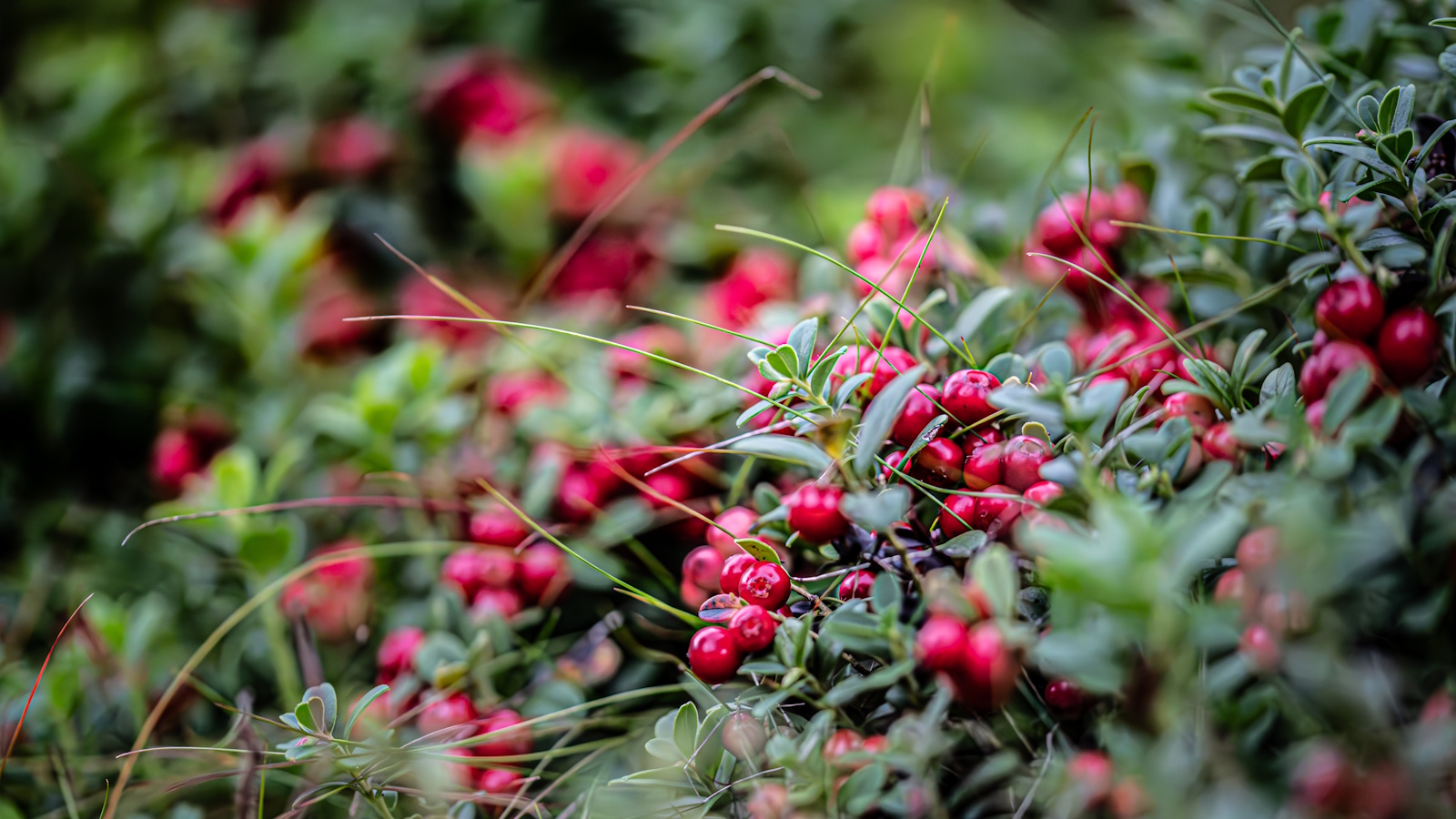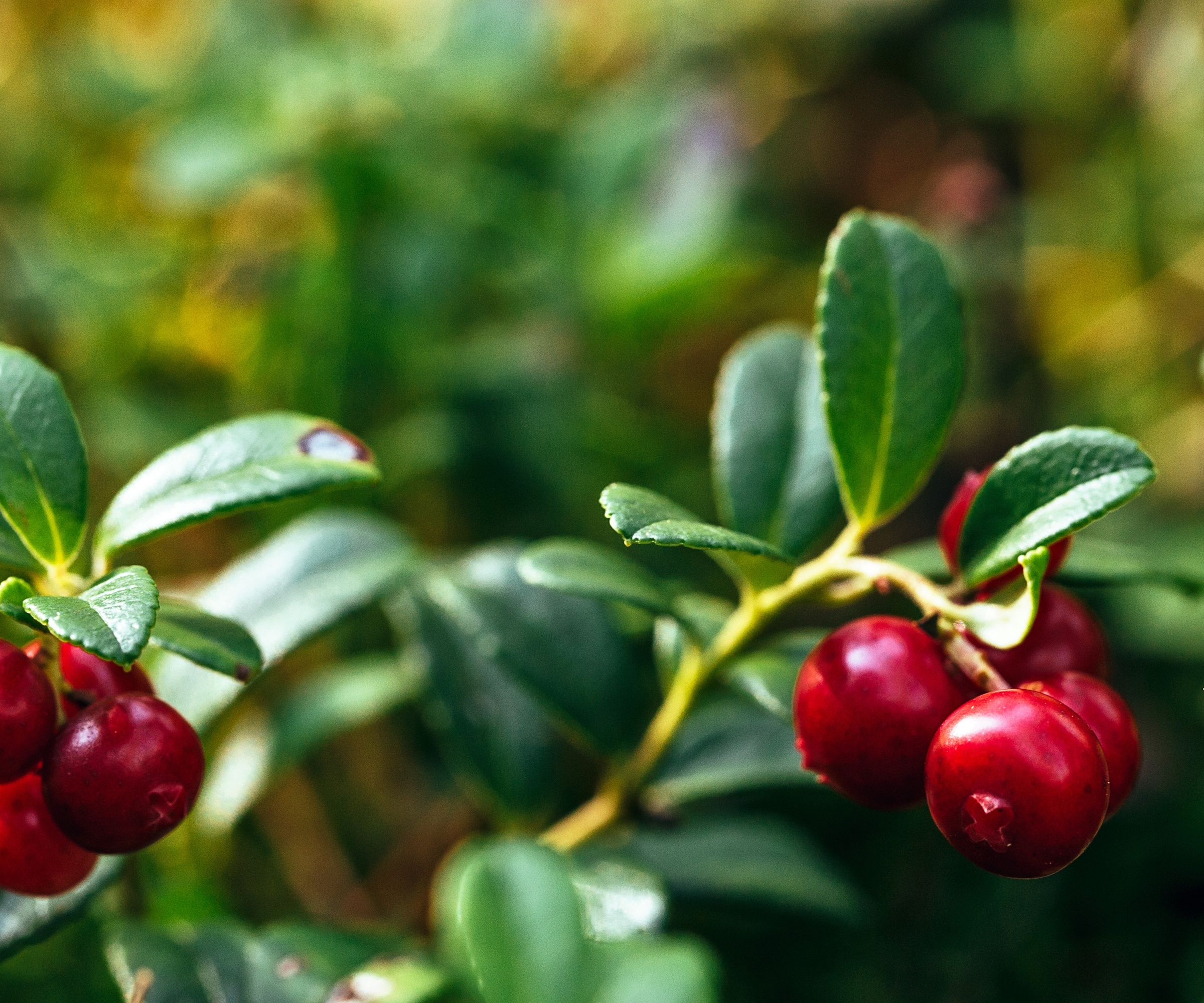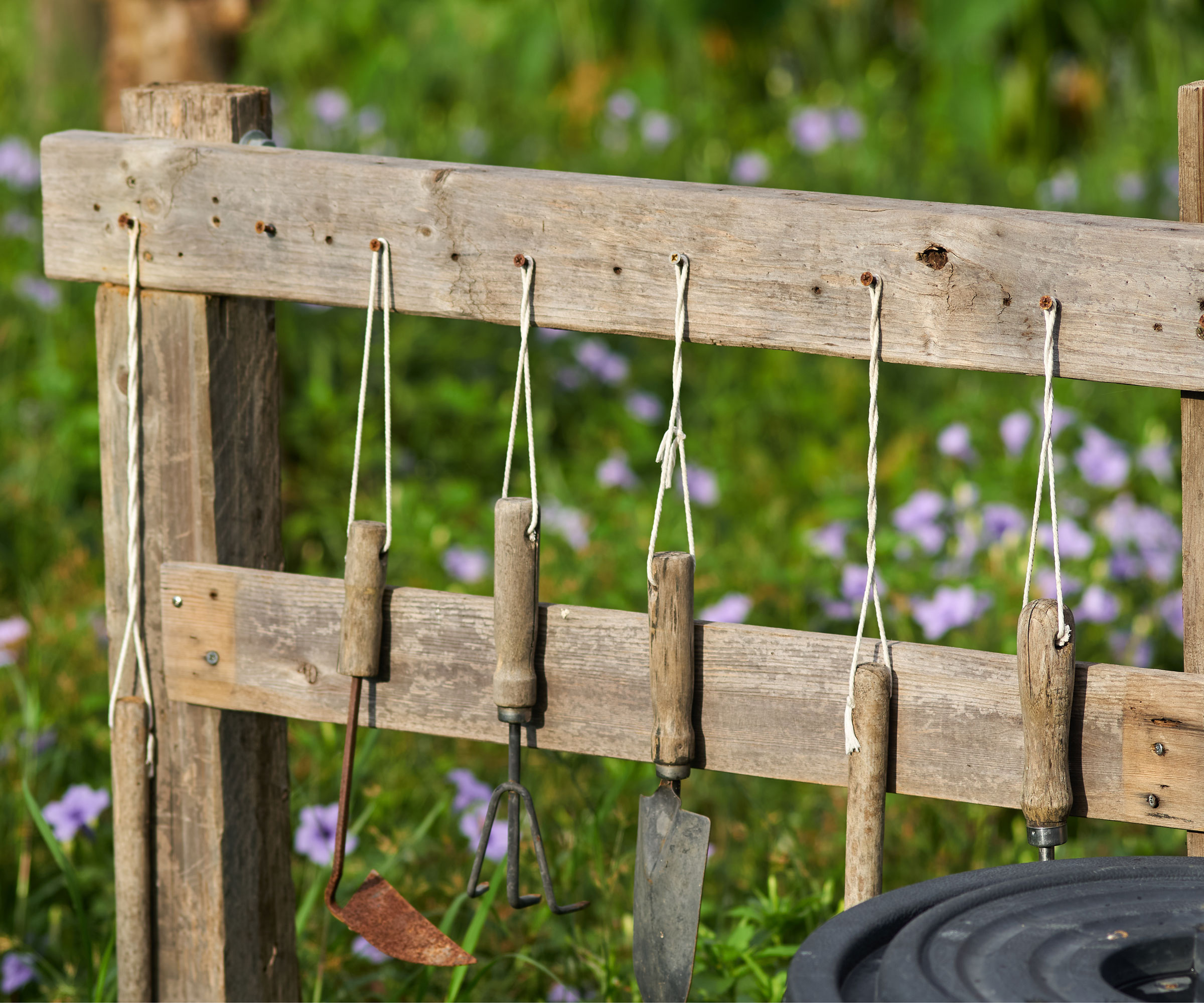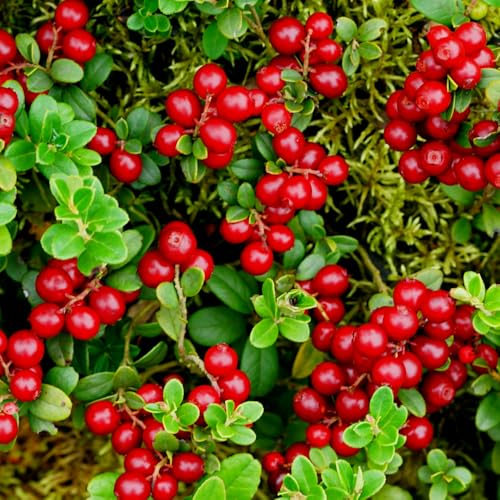How to grow lingonberry shrubs – for an evergreen ground cover native to North America
With shiny green foliage and attractive berries, lingonberries are useful ground cover plants that will thrive in part-shade


Lingonberries, Vaccinum vitas-idaea, are low-growing evergreen plants native to boreal forests and arctic tundra in the cooler regions of North America, Asia and Europe. With shiny green foliage, this low-growing species can be grown as a ground cover in partially shaded beds and borders, adding year-round greenery to challenging areas.
As you might have guessed from the native range, this species thrives in northerly regions, tolerating cold temperatures, snow, and frost. What's more, as a close relative to blueberries, bilberries, and cranberries, lingonberries produce jewel-like red fruits in late summer and fall.
If you are looking for an evergreen ground cover plant that will provide year-round greenery and produce colorful fruits, lingonberries might be the low-growing plant for you. Here, one garden expert shares all the information you need to learn about how to grow lingonberry plants in your yard.

How to grow lingonberry plants
While we all enjoy bright and brilliant perennials in our borders, growing a selection of evergreens for front yards and backyards is a sensible idea. Evergreens, such as lingonberries, can help to fill challenging areas including under trees or in shady corners. Planting with every season in mind will help to make the most of your garden, whatever the time of year.
Growing habits of lingonberries

'If you are looking for an evergreen groundcover, lingonberry is one low-growing, robust species to consider,' says Tabar Gifford, plant expert and American Meadows master gardener. This native plant will grow to a height of one to two feet with a spread of two feet.
'Lingonberries can be grown in US hardiness zones 2 to 8 and are native to the circumpolar and boreal regions of North America, Eurasia and Japan. In North America, lingonberry can be found from Greenland to Alaska, and south to the Great Lakes and New England, growing in peaty or acidic soils.
'From late spring to early summer, tiny, pink, bell-shaped flower clusters form, complemented by the shiny dark evergreen foliage, before berries are produced in summer and fall. These berries are loved by birds and other wildlife, as well as people,' Tabar adds, 'with a taste somewhere between the tart bite of a cranberry and the sweetness of a blueberry.'
Design expertise in your inbox – from inspiring decorating ideas and beautiful celebrity homes to practical gardening advice and shopping round-ups.
So, if you are looking for wildlife garden ideas or shrubs for fall berries to add color to your borders in October and November, lingonberries are a tough, resilient plant that works well in most situations. While they are usually planted in full-sun to part-shade, they can also be planted in deep shade, although flower and berry production will be noticeably reduced.

Tabar Gifford works as an American Meadows Master Gardener, and has a lifelong love for gardening and nature. With a background in environmental studies and sustainable community development, she enjoys combining her horticultural expertise with a commitment to education.
Gardening advice for lingonberries

Soil: Lingonberries prefer 'slightly acidic but well-drained soils,' Tabar says. While they can grow in neutral conditions, borders that have a soil pH of 5.0 to 6.5 will tend to see the best results, as Tabar advises. If you are unsure how to make soil more acidic, consider applying pine straw mulch, available from Walmart, or some organic matter, which will improve soil health and help lingonberry plants thrive.
Light: This low-growing shrub will do best in partial shade. While they will tolerate darker conditions, provide at least three or four hours of sunshine each day to generate the best results with plenty of berries.
Watering: Lingonberries have very shallow root systems, meaning that in the summer, when the soil can dry out quickly, supplemental watering will be required. Annual mulching of your plants will help to maintain moisture in the soil and suppress weeds too, which is important, as weeds with tap roots will be able to outcompete lingonberry roots that can only access surface-level water.
Fertilizing: 'Apply mulch, compost, or an all-round feed once a year in the spring,' Tabar adds. Once your lingonberry plants are established, however, they should be able to survive just fine without any need for fertilizer.
Pruning: In the spring, it is a good idea to remove any dead or damaged stems ahead of the growing season. Lingonberries have an average growth rate and will reach their mature size in a matter of years, which is typically no more than two feet tall and wide. 'It is a good idea to prune your lingonberries every few years in late winter to promote new shoots and fruit production,' Tabar adds. Pruning snips are available from Amazon.
Toxicity: Lingonberries are not considered toxic to humans or animals, although it is always best to do your homework on the exact species or variety you are growing before ingesting any fruit.
FAQs
What is a recommended variety of lingonberry to grow?
'One of my favorites is 'Red Sunset', says Tabar, otherwise known as Vaccinium vitis-idaea 'Red Sunset'. 'This species is valued as a particularly vigorous native plant, with consistent growth, good height, strong spread, and larger-than-average berries.' What's more, birds will flock to your borders in the fall, grateful for these tasty lingonberry fruits in the fall months.
Lingonberries are good low-growing plants if you have pest problems in your yard. If your ground cover plants are regularly attacked by unwelcome visitors, try planting lingonberries underneath witch hazel and red twig dogwoods, which are also regarded as deer-resistant plants, thereby helping to deter any hungry deer.
For more planting inspiration, see our guide on how to grow creeping juniper, for another native evergreen that will add greenery to your borders at all times of year.

Thomas is a Content Editor within the Gardens Team at Homes and Gardens. He has worked as a professional gardener for both public spaces and private estates, specializing in productive gardening, growing food and flowers. Trained in Horticulture at the Garden Museum, he has written on gardening and garden history for various publications, including The English Garden, Gardens Illustrated, Hortus, The London Gardener and Bloom. He has co-authored a Lonely Planet travel book, The Tree Atlas, due out in 2024.
